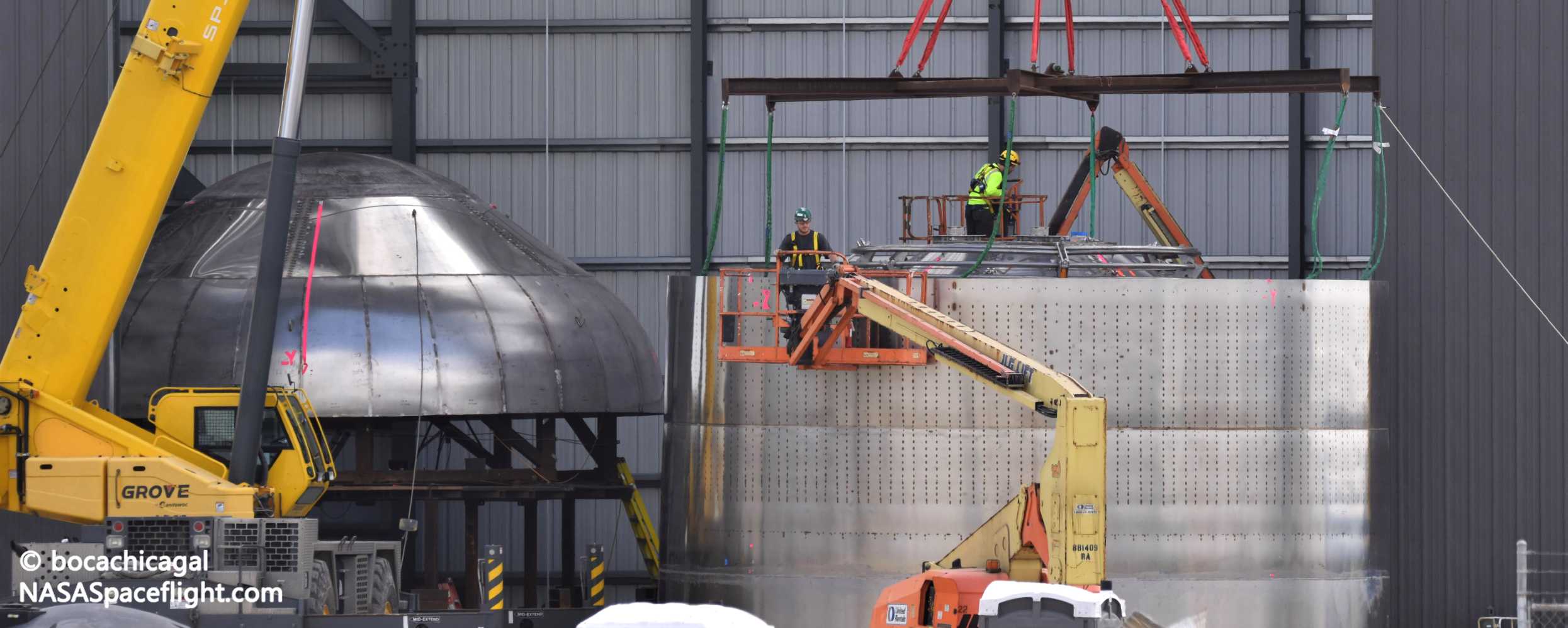

News
SpaceX shrugs off Starship implosion and gets back to work as Elon Musk talks next steps
SpaceX has shrugged off the catastrophic implosion of its first serial Starship prototype (SN01) and begun stacking sections of the next ship (SN02) while CEO Elon Musk talks next steps for the next-generation rocket program.
By now, it’s reasonably clear that the demise of Starship SN01’s tank and engine section came as a bit of surprise to SpaceX itself, while it assuredly shocked non-employees and local residents who happened to be watching on eve of the anomaly. CEO Elon Musk himself appears to have expected different results, noting that – thankfully – the likely source of the Starship’s unforeseen failure had already been determined.
Despite the apparent setback, it appears that SpaceX won’t have to wait long at all to continue its uniquely ‘hardware-rich’ Starship test campaign. With a workforce now several hundred strong and a great deal of hands-on and strategic experience gained from building Starships Mk1 and SN01, SpaceX is now practically churning out parts for future Starship SNxx prototypes. Most notably, Starship SN01’s predecessor is potentially just a few days away from being stacked into a finished tank section, hinting at the almost unfathomably speed that SpaceX is able to build full-scale vehicles even in early days of the program.
Three days after Starship SN01’s spectacular implosion and unintentional ‘launch’, SpaceX CEO Elon Musk took to Twitter to share a video captured by local Boca Chica Village resident ‘bocachicagal’ and posted by NASASpaceflight.com. Attached above, Mary’s video offers an incredibly vivid view of the rocket’s violent demise while further revealing the apparent location where the failure started – Starship SN01’s engine section and thrust structure.
Confirming suspicions, Musk quickly implied that the Starship’s failure originated in or around its thrust structure (‘thrust puck’), further noting that Starship SN02 – already in the middle of production – would be “stripp[ed]…to [the] bare minimum to test the thrust puck to dome weld.” In essence, it sounds like Starship SN02 will become SpaceX’s third intentional “test tank”, following in the footsteps of two small Starship tanks built and pressurized to failure to verify the quality of Starship manufacturing.
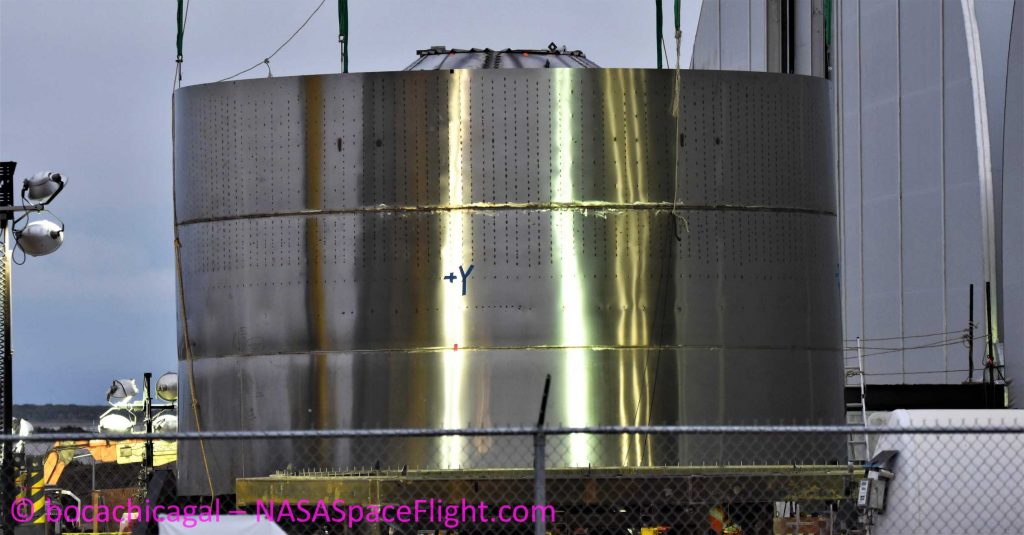
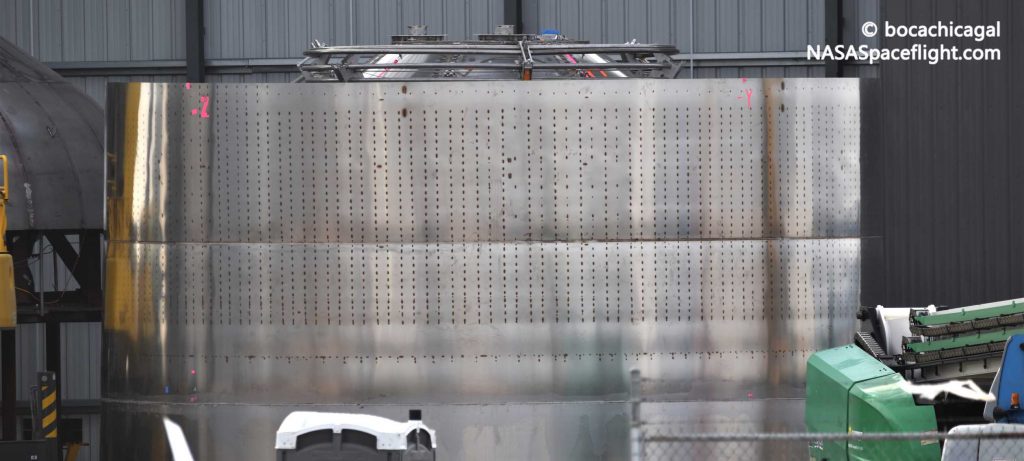
Starship SN02’s thrust structure design already appears to be a departure from SN01’s apparently unsuccessful iteration. Given that it was already partially completed before Starship SN01 failed during testing, it’s possible that SpaceX will attempt to reinforce the SN02 thrust structure, but the company may have already implemented upgrades before its engineers had the benefit of hindsight from February 28th’s test.
Regardless of what happens to Starship SN02, the fact that SpaceX is apparently building full-scale, (mostly) functional Starship tank sections from raw materials to the launch pad in a matter of a few weeks is incredibly encouraging for the next-generation rocket development program. As an external observer, it’s certainly disappointing to see an impressive piece of rocket hardware shredded in an evening after weeks of work, but that speed – and SpaceX’s willingness to accept failures at the scale of SN01 – suggests that each prototype is almost unfathomably cheap. Unofficial estimates peg the cost of SN01-like Starship prototypes at just several million dollars apiece, while the cost of the raw steel itself is so low that it might as well be negligible.
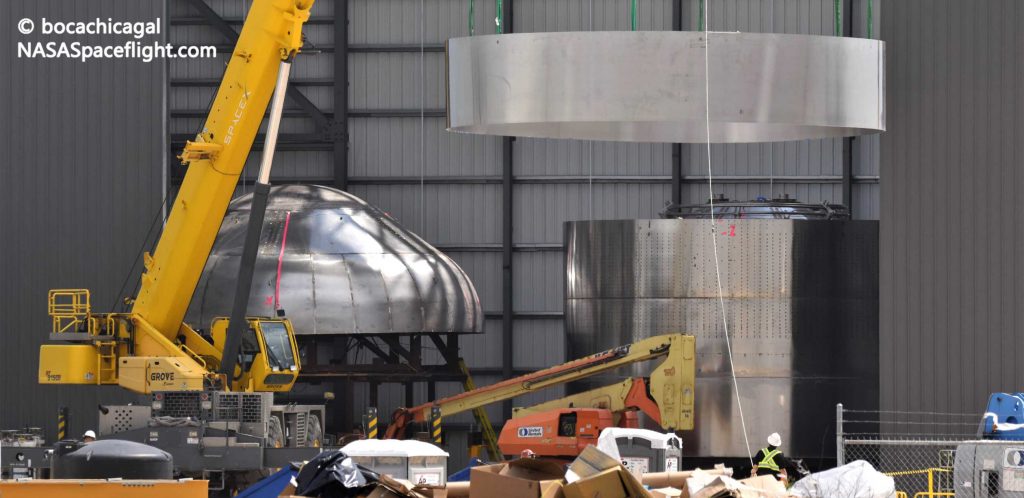
Even if it takes SpaceX 5-10 SN01-class failures to mature its South Texas rocket factory into a reliable machine and get to a point of stability and confidence with suborbital Starship flights, the total cost of that trial and error is comically insignificant relative to almost any other rocket development program in history. To be clear, SpaceX might benefit from going a little slower and refining Starship’s prototype design, but it’s impossible to know from an armchair. For now, the best available advice is to simply enjoy the show and view each potential test failure as just another small step along the path to Mars.
Check out Teslarati’s Marketplace! We offer Tesla accessories, including for the Tesla Cybertruck and Tesla Model 3.
News
Tesla opens massive solar Supercharger station in California
The Supercharger opened to customers ahead of Fourth of July weekend, while Tesla continues phase two of construction on the site.
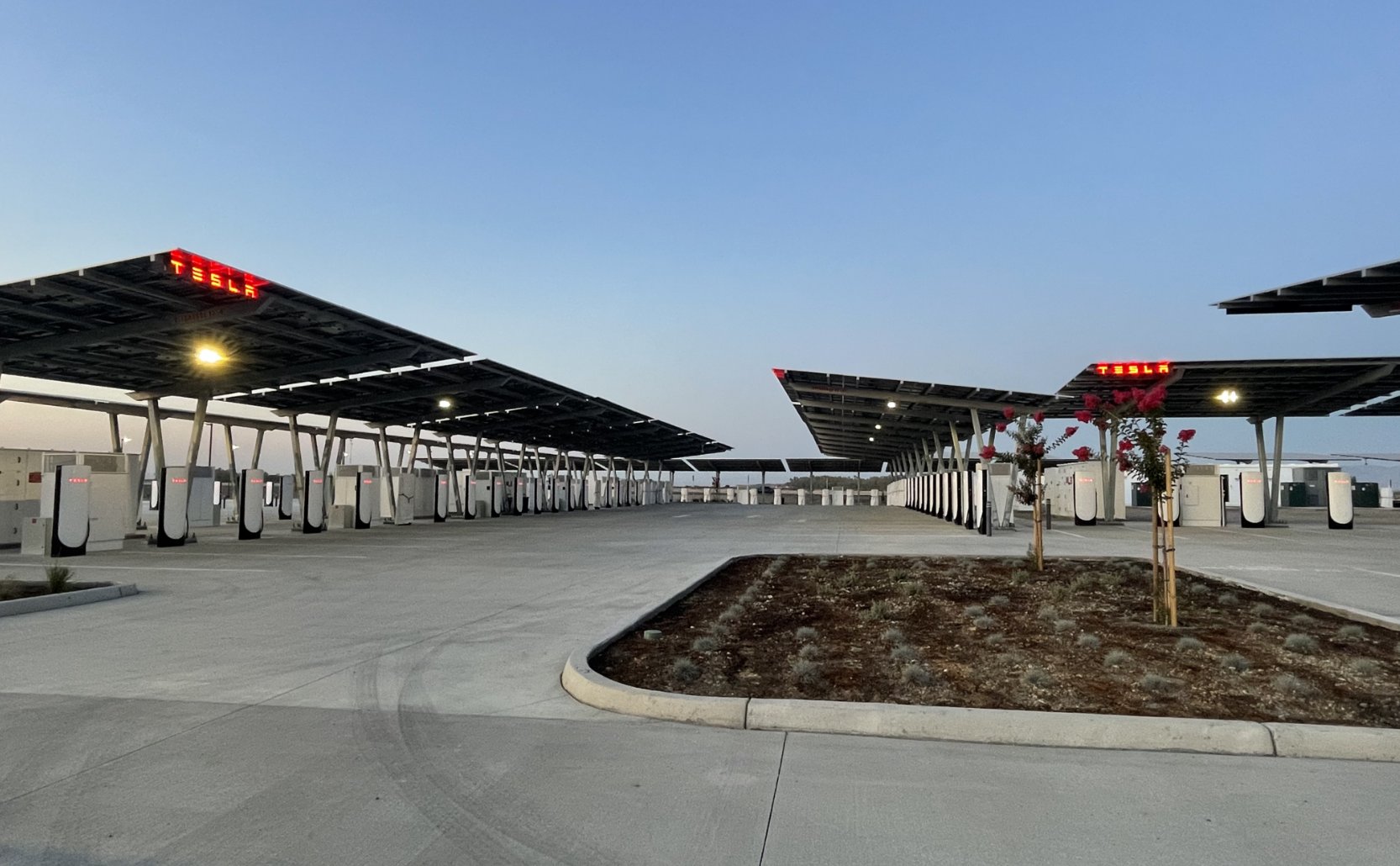
Tesla has officially launched the first several Supercharging posts at a massive station in California, notably including solar canopies and grid-scale batteries to offer completely renewable charging.
Last week, Tesla announced on X that it opened the first 84 Supercharger stalls of a planned 168-stall station in Lost Hills, California. Additionally, the massive Supercharger project features 11MW of solar canopies and 10 Megapack batteries for off-grid charging powered entirely by solar energy.
Tesla completed the first phase of the project just days ahead of the busy Fourth of July holiday weekend, adding that initial construction took just eight months. In addition to the remaining charging stalls, Tesla says it’s building a set of lounge areas, renderings of which can be seen below alongside current photos of the site.
Notably, the site also includes V4 charging posts for the company’s latest available charging speeds, and it’s located near the busy junction between I-5 and Highway 46 in Kern County.
“Thank you [Kern County] and [PG&E] for collaboration and approvals,” Tesla wrote in a follow-up post.
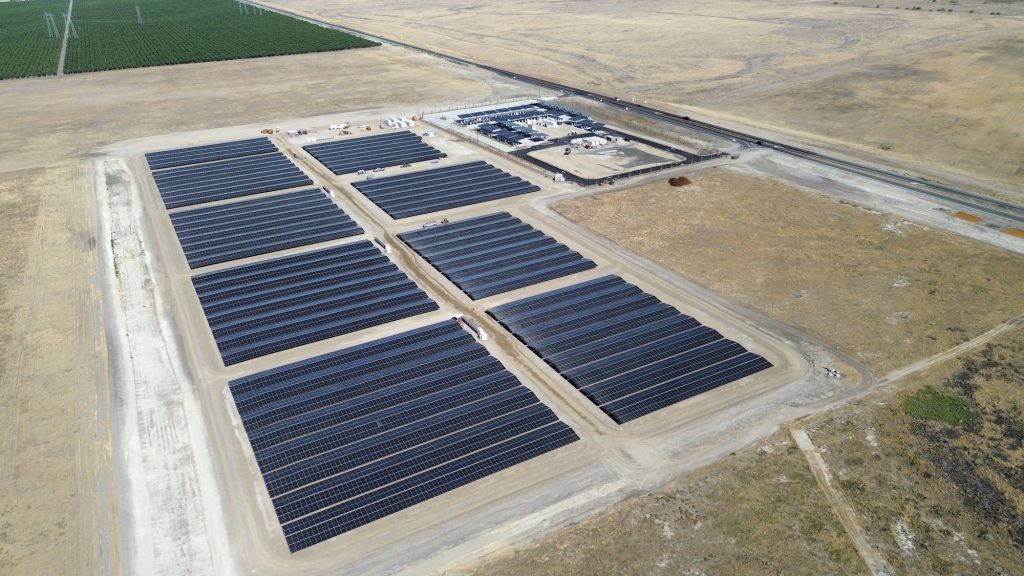
Credit: Tesla Charging | X
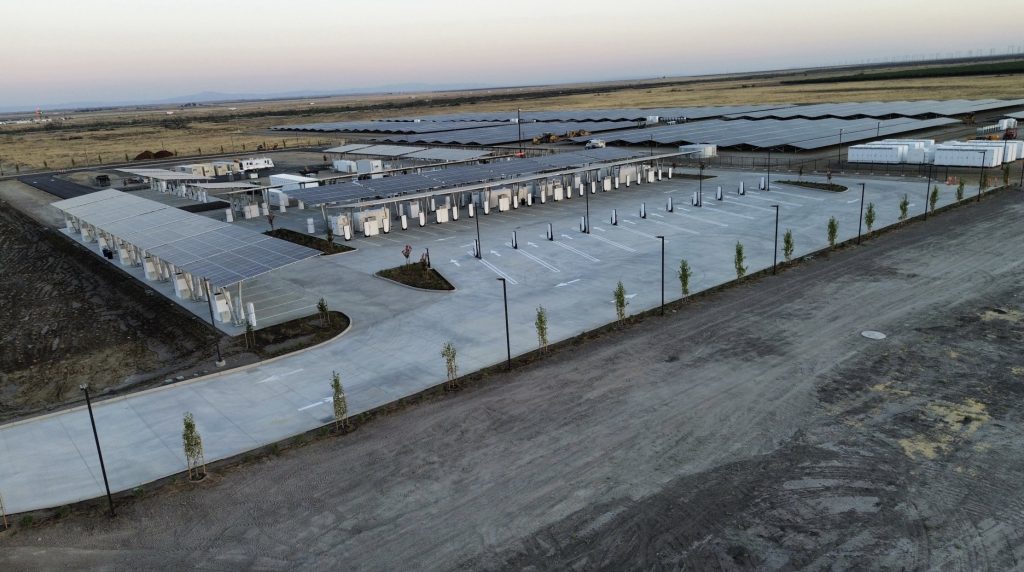
Credit: Tesla Charging | X
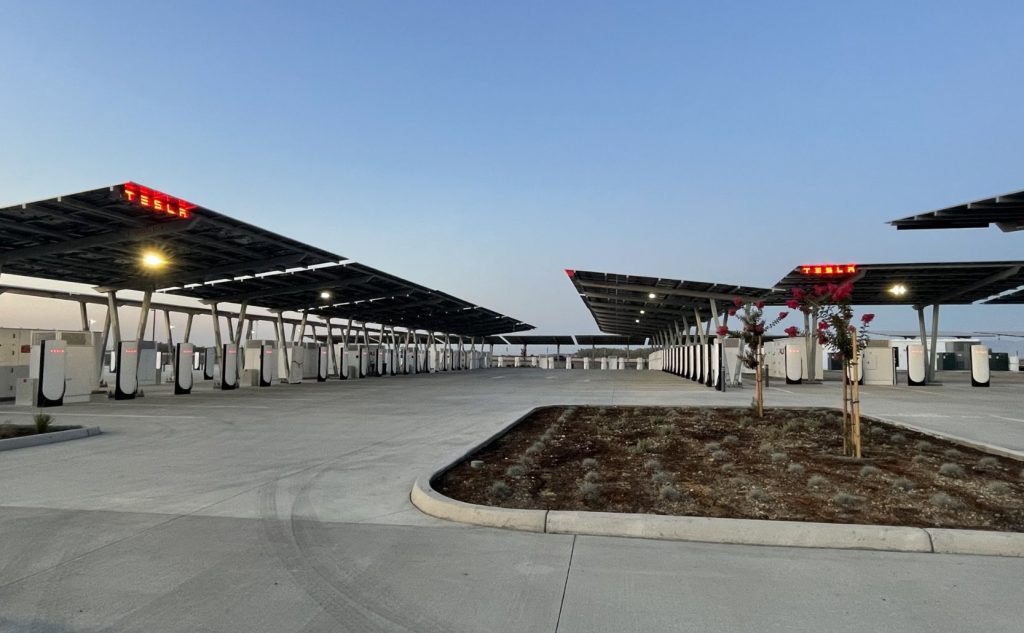
Credit: Tesla Charging | X
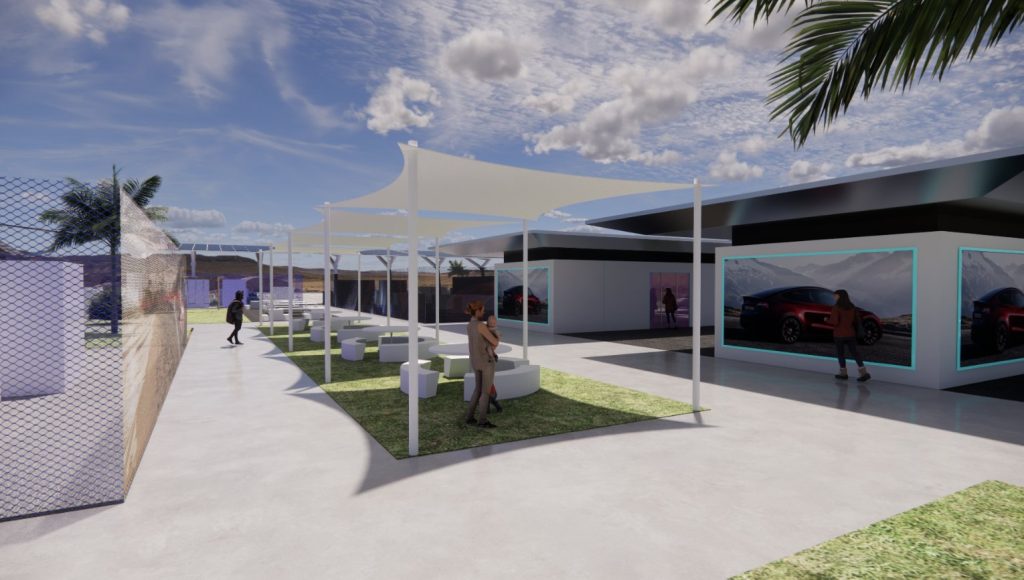
Credit: Tesla Charging | X
Tesla Supercharger Maps for North America, Europe, and Asia pic.twitter.com/0U5r0XRPyo
— TESLARATI (@Teslarati) July 2, 2025
READ MORE ON TESLA SUPERCHARGERS: Tesla launches ultra-fast V4 Superchargers in China for the first time
Testing at the LA Diner, plus Musk update on potential Tesla solar Gigafactory
The huge Tesla Supercharger station completed phase one of construction fairly quickly, especially given how long Tesla has been working on its unique Los Angeles diner, drive-in, and Supercharger location. Still, the company was seen performing some testing at the nearly-completed charging station earlier this month, and will reportedly be holding a job fair.
Elon Musk also responded on Monday morning to a post on X, suggesting that Tesla is “thinking about” building a U.S.-based solar Gigafactory in order to help support increased power needs with AI growth, and to bolster domestic solar production.
Tesla is building a new UFO-inspired Supercharger in the heart of Alien country
News
Tesla driver walks away from major accident with minor injuries
The driver sustained only minor injuries, and the exact cause of the crash remains under investigation.
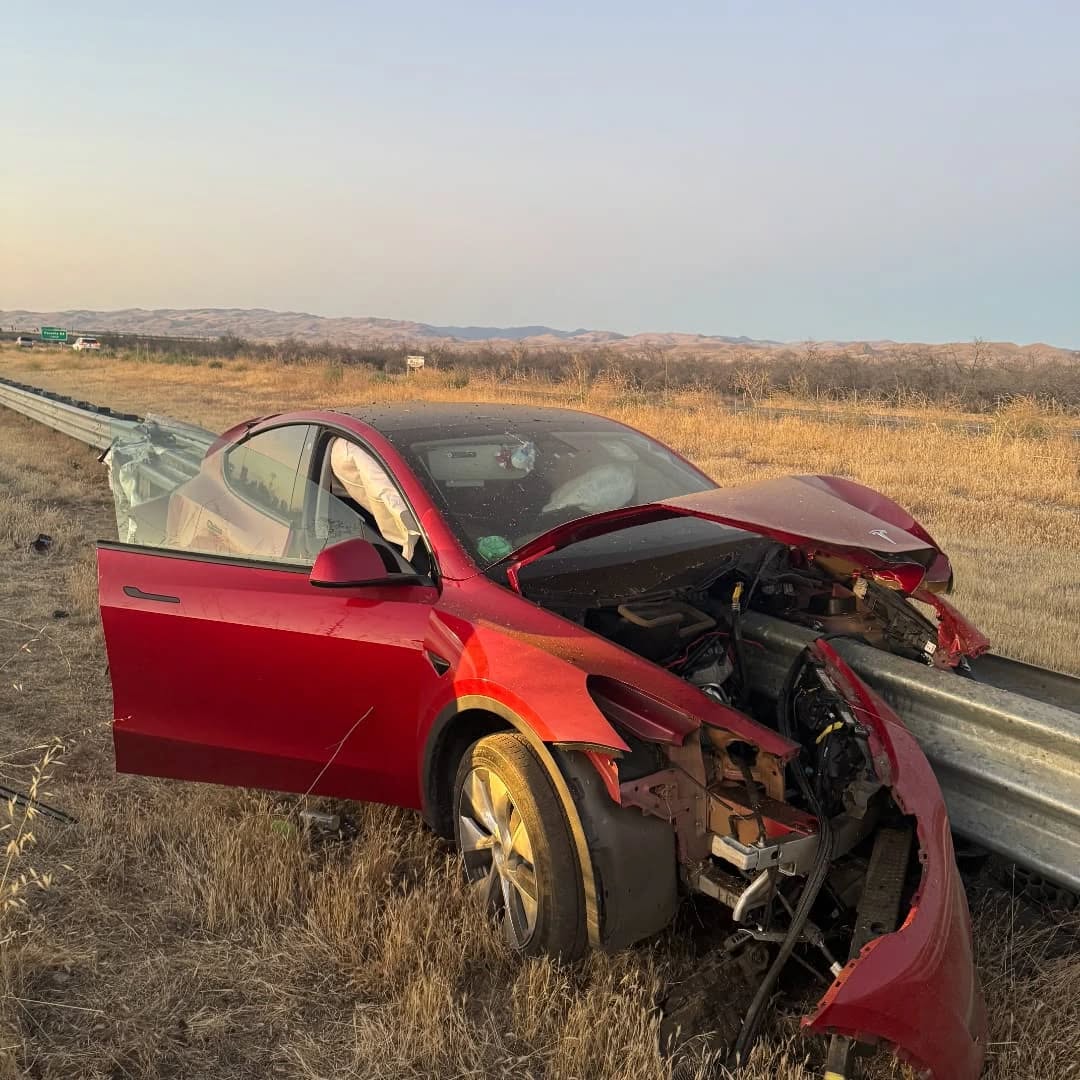
The driver of a Tesla Model Y survived and walked away from a harrowing accident on Monday in California, only sustaining minor injuries despite the vehicle being impaled by a guardrail.
On Monday morning around 4:34 a.m., the Los Banos division of the California Highway Patrol (CHP) responded to the accident on I-5 near Panoche Road, involving a 23-year-old in a Tesla Model Y. According to a post on social media, the driver veered off the road for unknown reasons in the northbound lane, before crashing directly into the guardrail and impaling the vehicle.
You can read the full message and photos from Los Banos CHP below, as were shared in a Facebook post on Monday afternoon.
This morning a Tesla model y was traveling in the #1 northbound lane of I-5 north of Panoche Rd. For unknown reasons driver allowed V-1 to veer off the roadway, travel through a dirt center divide, and crashed into the fixed metal guardrail. Lucky for the driver he only sustained minor injuries and was able to walk away. Driving a vehicle requires 100% attention to the road. Avoid distractions and focus on driving.
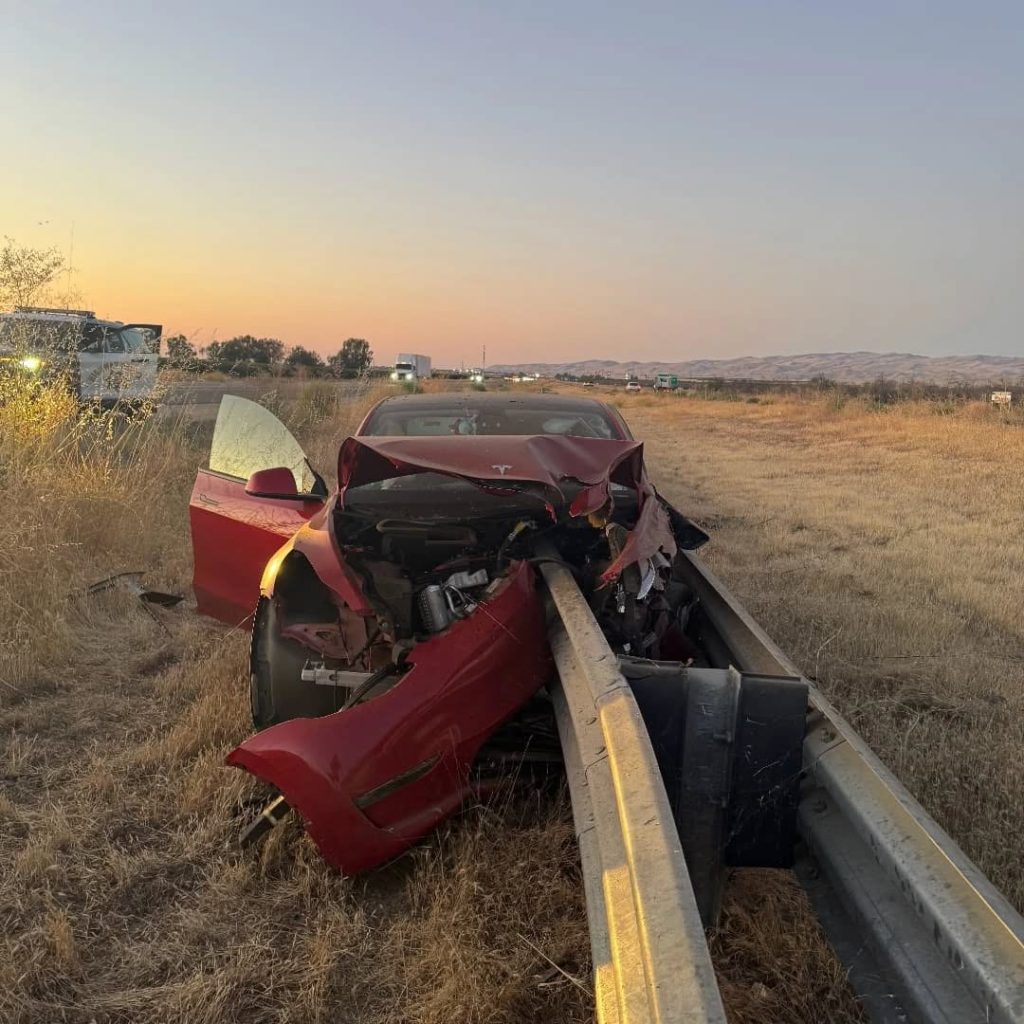
Credit: CHP Los Banos (via Facebook)
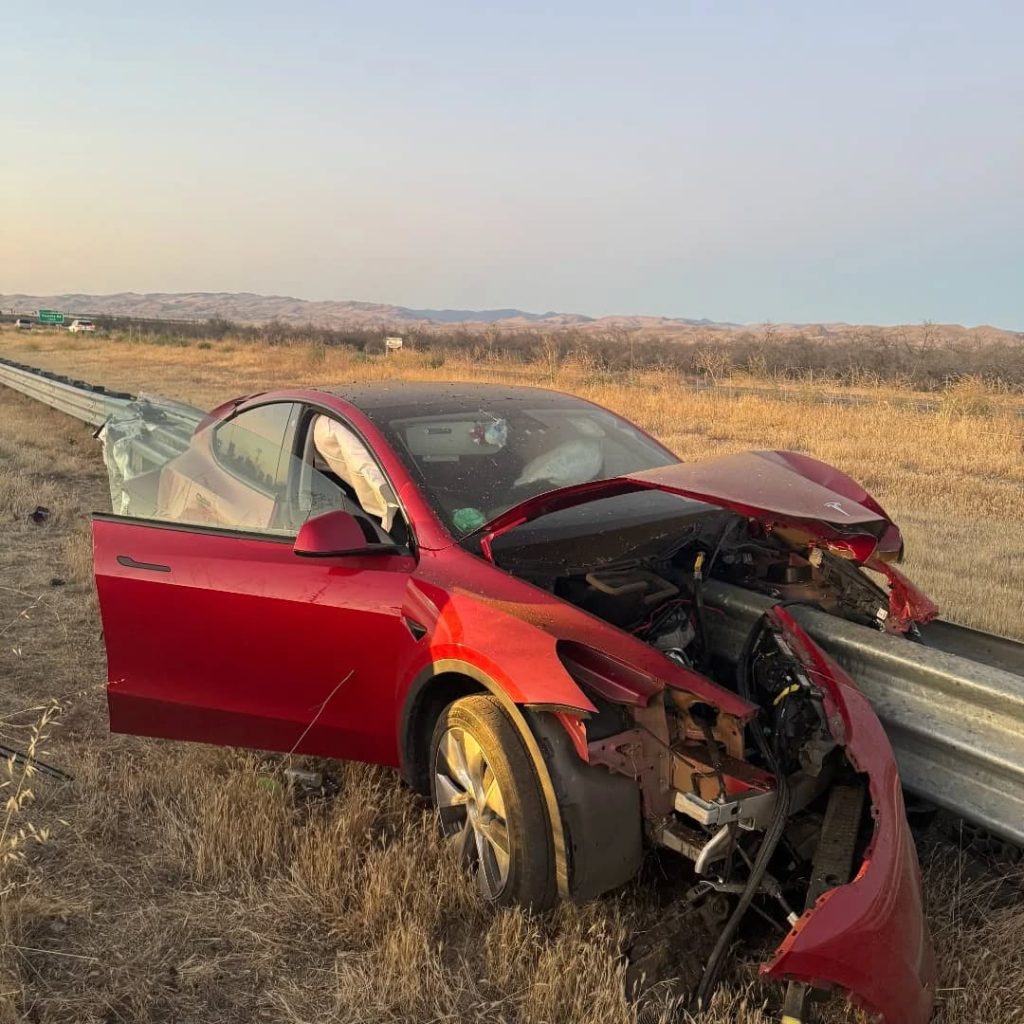
Credit: CHP Los Banos (via Facebook)
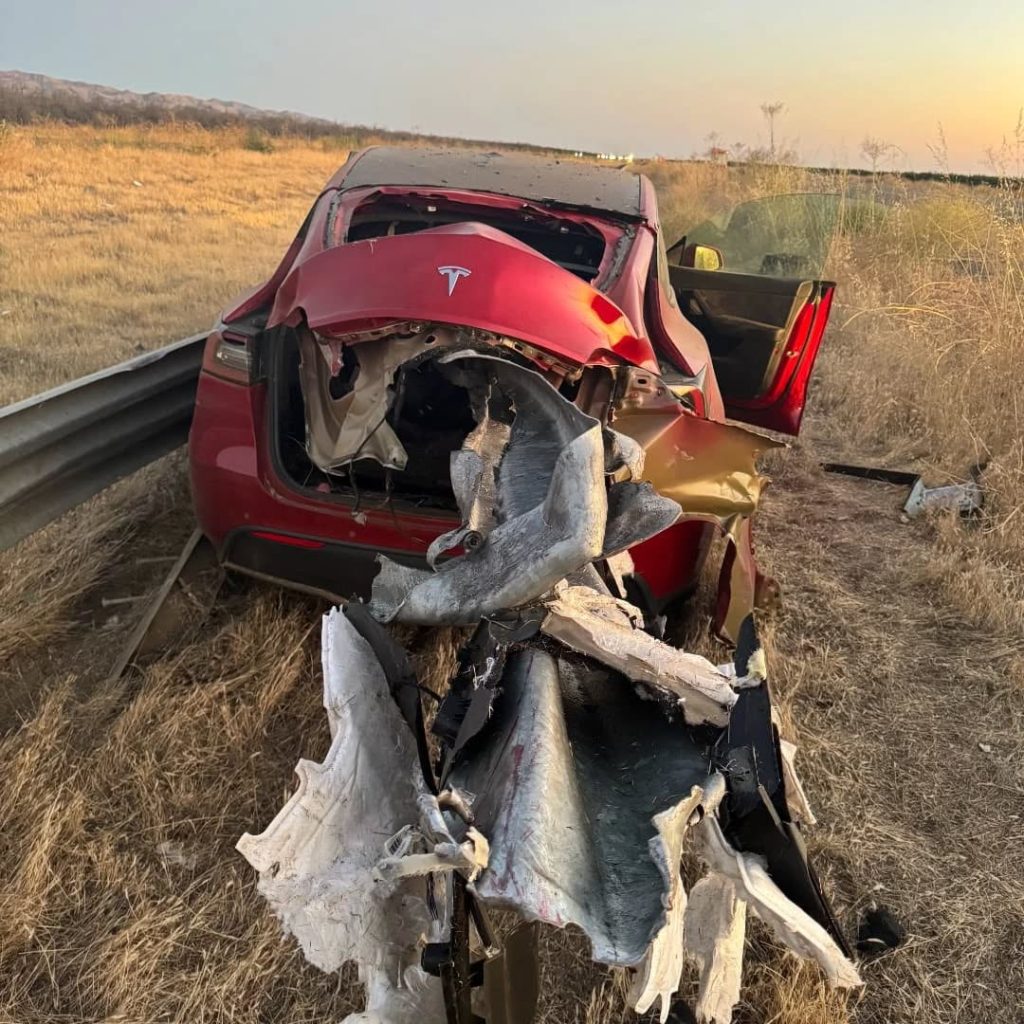
Credit: CHP Los Banos (via Facebook)
In a statement to SFGate, CHP officer Myles Anderson said that the driver only sustained minor injuries, while no arrests are made and drugs and alcohol are not suspected to have been involved. The report also notes that Tesla’s “cruise control and lane assistance features” were activated, according to Anderson. However, it’s not entirely clear if this is referring to Supervised Full Self-Driving (FSD), or to the cruise control and lane assist features baked into Autopilot.
At the time of writing, CHP has not yet responded to Teslarati’s request for clarification and additional details on the matter.
Tesla Crash Safety Ratings across its lineup: pic.twitter.com/ny30R7ceji
— TESLARATI (@Teslarati) July 1, 2025
READ MORE ON TESLA SAFETY: Tesla rolls out crucial new safety feature aimed at saving children
The news comes after Tesla has touted its vehicles as incredibly safe for many years. In December, for example, the company highlighted receiving top safety scores from regulators on four different continents throughout the world, including from the National Highway Traffic Safety Administration (NHTSA) and the Insurance Institute of Highway Safety (IIHS) in the U.S.
Tesla has also listed the goal of making its vehicles the safest on the road throughout the years, both in the overall design of its vehicles and in its Autopilot and Full Self-Driving (FSD) programs.
Tesla Model 3 ranks as the safest new car in Europe for 2025, per Euro NCAP tests
Investor's Corner
Cantor Fitzgerald maintains Tesla (TSLA) ‘Overweight’ rating amid Q2 2025 deliveries
Cantor Fitzgerald is holding firm on its bullish stance for the electric vehicle maker.
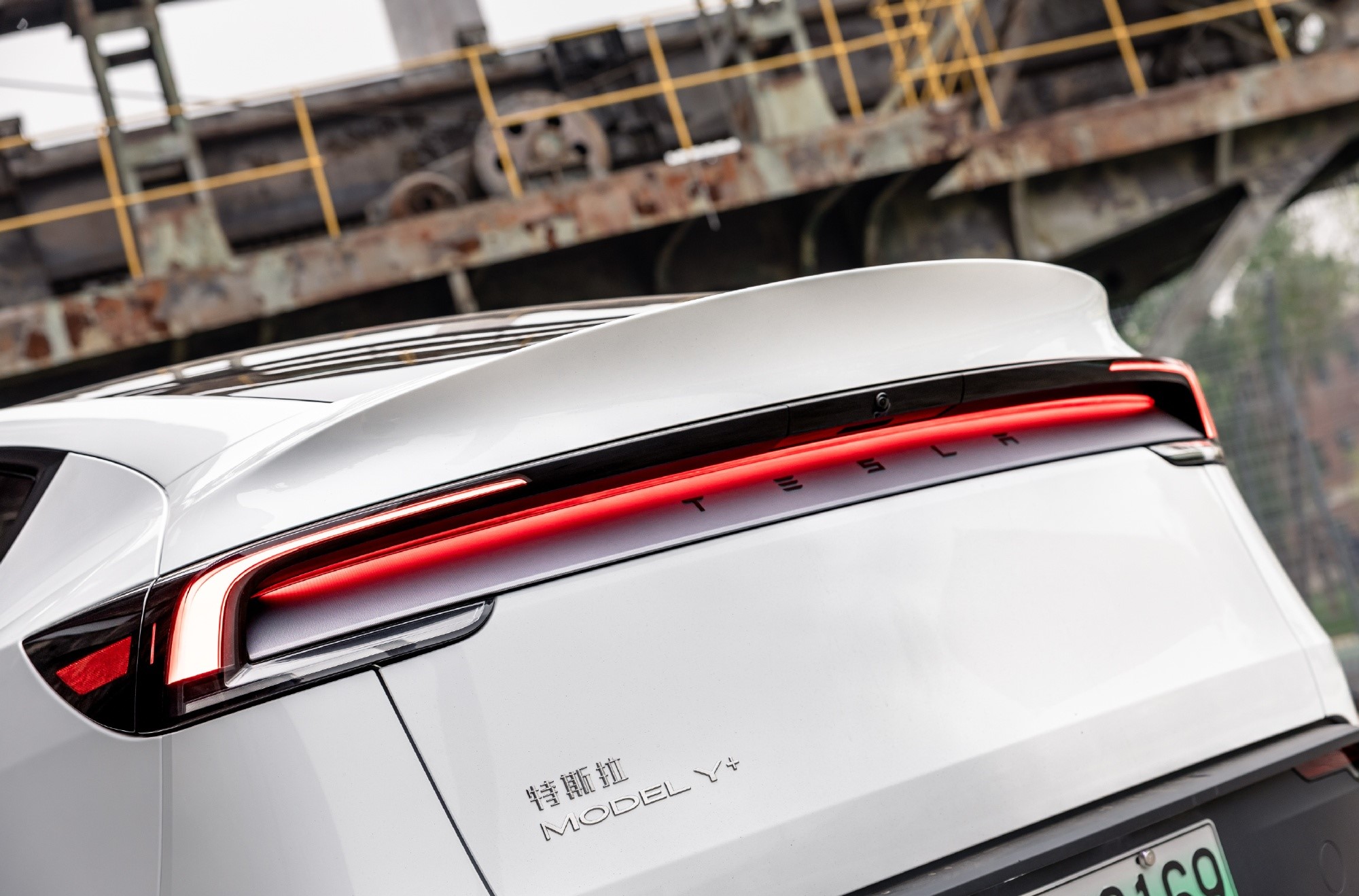
Cantor Fitzgerald is holding firm on its bullish stance for Tesla (NASDAQ: TSLA), reiterating its “Overweight” rating and $355 price target amidst the company’s release of its Q2 2025 vehicle delivery and production report.
Tesla delivered 384,122 vehicles in Q2 2025, falling below last year’s Q2 figure of 443,956 units. Despite softer demand in some countries in Europe and ongoing controversies surrounding CEO Elon Musk, the firm maintained its view that Tesla is a long-term growth story in the EV sector.
Tesla’s Q2 results
Among the 384,122 vehicles that Tesla delivered in the second quarter, 373,728 were Model 3 and Model Y. The remaining 10,394 units were attributed to the Model S, Model X, and Cybertruck. Production was largely flat year-over-year at 410,244 units.
In the energy division, Tesla deployed 9.6 GWh of energy storage in Q2, which was above last year’s 9.4 GWh. Overall, Tesla continues to hold a strong position with $95.7 billion in trailing twelve-month revenue and a 17.7% gross margin, as noted in a report from Investing.com.
Tesla’s stock is still volatile
Tesla’s market cap fell to $941 billion on Monday amid volatility that was likely caused in no small part by CEO Elon Musk’s political posts on X over the weekend. Musk has announced that he is forming the America Party to serve as a third option for voters in the United States, a decision that has earned the ire of U.S. President Donald Trump.
Despite Musk’s controversial nature, some analysts remain bullish on TSLA stock. Apart from Cantor Fitzgerald, Canaccord Genuity also reiterated its “Buy” rating on Tesla shares, with the firm highlighting the company’s positive Q2 vehicle deliveries, which exceeded its expectations by 24,000 units. Cannacord also noted that Tesla remains strong in several markets despite its year-over-year decline in deliveries.
-

 Elon Musk1 week ago
Elon Musk1 week agoTesla investors will be shocked by Jim Cramer’s latest assessment
-

 News2 weeks ago
News2 weeks agoTesla Robotaxi’s biggest challenge seems to be this one thing
-

 News2 weeks ago
News2 weeks agoWatch the first true Tesla Robotaxi intervention by safety monitor
-

 Elon Musk1 week ago
Elon Musk1 week agoA Tesla just delivered itself to a customer autonomously, Elon Musk confirms
-

 News2 weeks ago
News2 weeks agoTesla Robotaxi rollout proves that Elon Musk still delivers, even if it’s late
-
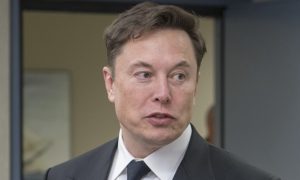
 Elon Musk2 weeks ago
Elon Musk2 weeks agoElon Musk commends Tesla team on successful Robotaxi launch
-

 Elon Musk2 weeks ago
Elon Musk2 weeks agoElon Musk confirms Tesla Optimus V3 already uses Grok voice AI
-

 Elon Musk2 weeks ago
Elon Musk2 weeks agoxAI welcomes Memphis pollution results, environmental groups push back


















